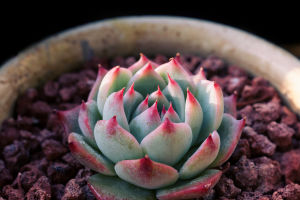Who doesn't love fresh herbs in their kitchen? Whether you're adding a sprinkle of basil to your pasta, a dash of rosemary to your roast, or a handful of mint to your tea, herbs can elevate any dish.
But what if we told you that you could grow your own herbs right at home, year-round?
An indoor herb garden is an easy and rewarding way to have fresh herbs at your fingertips, no matter the season. In this article, we'll walk through the simple steps on how to create your very own indoor herb garden, and trust us, it's easier than you think!
Why Grow Herbs Indoors?
Growing herbs indoors has numerous benefits. For one, they're incredibly convenient. Imagine walking a few steps to your kitchen windowsill to snip some fresh basil or parsley. No more running to the store for fresh herbs that might go bad before you use them!
Indoor herb gardens also allow you to grow your favorite herbs year-round, regardless of the weather. Plus, it's a great way to save money—no more spending on overpriced bundles of herbs that you only need a handful of. And let's not forget the joy of having a little green space inside your home, bringing a touch of nature to your everyday routine.
Choosing the Right Herbs for Your Indoor Garden
The first step in creating your indoor herb garden is choosing which herbs to grow. While most herbs can thrive indoors, some are better suited for indoor environments than others. Here are a few herbs that are particularly easy to grow inside:
• Basil: Basil is a popular herb that loves the sun. Place it near a south-facing window where it can get plenty of sunlight, and it will thrive in your indoor garden.
• Mint: Mint is a hardy herb that grows quickly, making it perfect for beginners. It does well in moderate sunlight and prefers a cool environment.
• Rosemary: Rosemary is a fragrant herb that does well in warm, sunny spots. It's perfect for adding flavor to meats and roasted vegetables.
• Parsley: Parsley is a great all-purpose herb. It grows well indoors as long as it gets enough sunlight and is watered regularly.
• Thyme: Thyme is another easy-to-grow herb that does well in smaller pots. It requires minimal maintenance and can thrive in various light conditions.
Setting Up Your Indoor Herb Garden
Now that you've picked your herbs, it's time to set up your garden! Follow these simple steps to create the perfect environment for your herbs:
1. Choose the Right Containers: Your herbs will need containers with drainage holes to avoid waterlogging. Small pots or containers work best for growing herbs indoors.
2. Use Good-Quality Potting Soil: Choose a well-draining potting mix. A soil mix designed for indoor plants will work perfectly and ensure that your herbs have the nutrients they need to grow.
3. Pick the Best Location: Herbs need plenty of sunlight to thrive. Ideally, place your herb garden on a windowsill where they'll receive 6-8 hours of sunlight each day. If you don't have access to direct sunlight, you can use a grow light to supplement the light your plants need.
4. Water Properly: Overwatering is a common mistake. Most herbs prefer to dry out slightly between waterings. Be sure to check the soil moisture before watering and ensure your pots have good drainage to prevent water from sitting at the bottom.
Maintaining Your Indoor Herb Garden
Once your herb garden is up and running, it's important to maintain it. Here are some tips to keep your plants healthy and happy:
• Prune Regularly: Regularly trimming your herbs encourages new growth and helps prevent them from getting too leggy. For herbs like basil and mint, pinch back the top leaves to promote bushier growth.
• Rotate Your Pots: If your plants are leaning toward the light, rotate them every few days to ensure even growth. This helps them grow straight and strong.
• Fertilize Occasionally: While herbs don't need heavy feeding, you can fertilize them once a month with a diluted liquid fertilizer to promote healthy growth.
• Pest Control: While rare, pests like aphids can sometimes make their way into your indoor garden. Keep an eye on your plants for any signs of pests, and treat them with an organic insecticide if necessary.
Harvesting Your Herbs
The best part of growing your own herbs is, of course, using them! Harvesting herbs is simple, but there are a few key things to keep in mind:
• Harvest in the Morning: The best time to harvest herbs is in the morning when their essential oils are most concentrated. This is especially true for herbs like basil and mint.
• Snip, Don't Pull: When harvesting, use a clean pair of scissors to snip off the leaves or stems. Avoid pulling the plant, as this can damage the roots and hinder future growth.
• Leave Enough Growth: Always leave a few inches of growth on your plant so it can continue to thrive and produce new leaves.
Conclusion: Enjoy Fresh Herbs Year-Round
Growing your own indoor herb garden doesn't have to be complicated. With just a few simple steps, you can enjoy fresh, flavorful herbs right in your own home, no matter the season. Not only will it save you money, but it'll also bring a little extra green into your living space.
We hope this guide has inspired you to start your own indoor herb garden. Have you already started growing herbs? Or are you thinking about starting your own garden soon? We'd love to hear your thoughts or any tips you have for fellow herb gardeners! Happy gardening! 🌿


